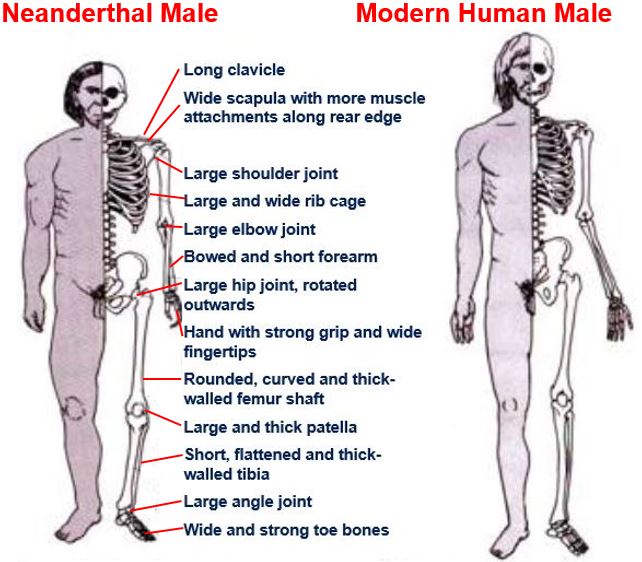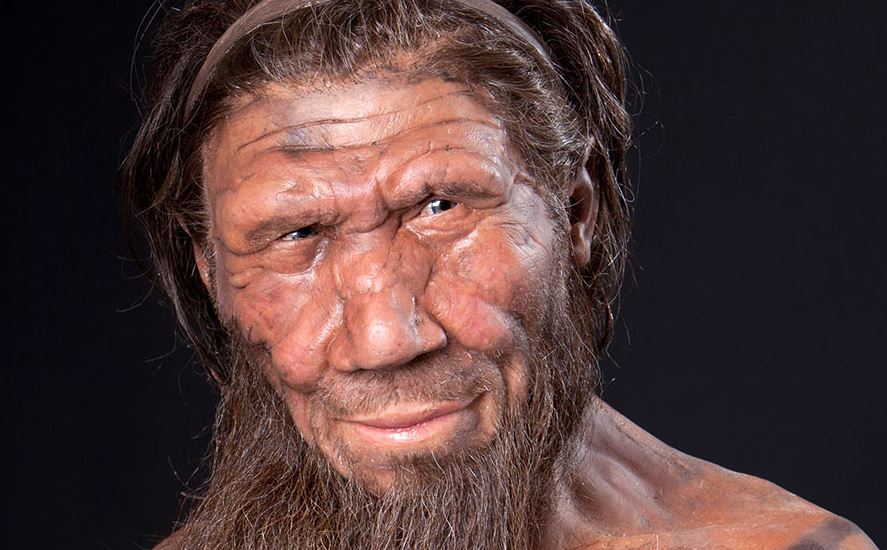Did Neanderthals become extinct because we (modern humans) had a higher higher cultural level, was it their inability to adapt to climate change, or some disease we infected them with? A new study carried out by a team of scientists from the USA and Japan suggests our higher cultural level was the deciding factor.
Neanderthals were a species or subspecies of human in the genus Homo that became extinct about 40,000 years ago. Their DNA was more than 99.5% the same as modern humans’. According to available evidence, they were much physically stronger than modern humans, especially their arms and hands, but were comparable in height.
Modern humans and Neanderthals are believed to have co-existed alongside each other for up to five thousand years. According to available evidence, they interbred and interacted during that time. However, eventually they were wiped out, and there are several theories as to why.
 While modern humans and Neanderthals were genetically very similar, there were some physical differences. Ewen Callaway wrote in Nature that when the two species interbred, the hybrid offspring probably suffered from significant fertility problems.
While modern humans and Neanderthals were genetically very similar, there were some physical differences. Ewen Callaway wrote in Nature that when the two species interbred, the hybrid offspring probably suffered from significant fertility problems.
What wiped out the Neanderthal?
1. The Ice Age: some anthropologists believe that we (modern humans) were not the driving factor – they think Neanderthals disappeared because they were less able to hunt when the last Ice Age came, compared to modern humans.
2. Disease: some experts suggest that modern humans infected them with pathogens which caused epidemics that wiped them out.
3. Genocide: we could have been directly involved in the killing of the Neanderthals, some scientists believe. Perhaps we targeted them specifically.
Scientists from Meiji University in Tokyo and Stanford University in California wrote in the academic journal Proceedings of the National Academy of Sciences (PNAS) that they found evidence of a casual role of competition in the Neanderthal’s demise.
4. Level of culture: William Gilpina and Marcus W. Feldmanb, from Stanford’s departments of Applied Physics and Biology respectively, and Kenichi Aokic, from the Organization for the Strategic Coordination of Research and Intellectual Properties at Meiji University, put forward a model for how modern humans would have outcompeted Neanderthals because culturally our ancient ancestors were more advanced.
The researchers used an interspecies competition model that takes in differences in the level of cultural development of the two groups.
 Researchers from the Natural History Museum in London and New York University found that in a sense, the Neanderthals were not a developental oddity, we were. (Image: hhm.ac.uk)
Researchers from the Natural History Museum in London and New York University found that in a sense, the Neanderthals were not a developental oddity, we were. (Image: hhm.ac.uk)
Cultural advantage perhaps the key factor
According to their model, a small modern human population would easily and completely displace a considerably larger population of Neanderthals, providing they had a big enough cultural advantage.
Their model showed a linear relationship, i.e. the greater their cultural advancement, the bigger the population they would have been able to displace.
The authors explained:
“It is likely that Neanderthals went extinct and were replaced by modern humans due to interspecific competition for overlapping resources.”
“Modern humans are believed to have gradually expanded their range into areas inhabited by Neanderthals (and other archaic humans) by a process of iterative propagule formation.”
The scientists stressed that their theory is based on several assumptions, hence it has limitations. However, they claim that their findings clearly showed that modern humans’ superior learning ability helped them displace Neanderthal populations.
If modern humans had just a slight edge over Neanderthals, the authors explained, that would have been enough to drive the replacement process. The Neanderthals were doomed the moment the process – which was self-perpetuating – began.
The authors wrote:
“Our findings shed light on the disappearance of the Neanderthals, showing that endogenous factors such as relative culture level, rather than such extrinsic factors as epidemics or climate change, could have caused the eventual exclusion of a comparatively larger population by an initially smaller one.”
Citation: “An ecocultural model predicts Neanderthal extinction through competition with modern humans,” William Gilpin, Marcus W. Feldman, and Kenichi Aoki. Proceedings of the National Academy of Sciences (PNAS). Published online before print February 1, 2016. DOI: 10.1073/pnas.1524861113.
Video – How Neanderthal are you?
In this video, published by the Natural History Museum in London, scientists examined the DNA of six well-known British figures.
